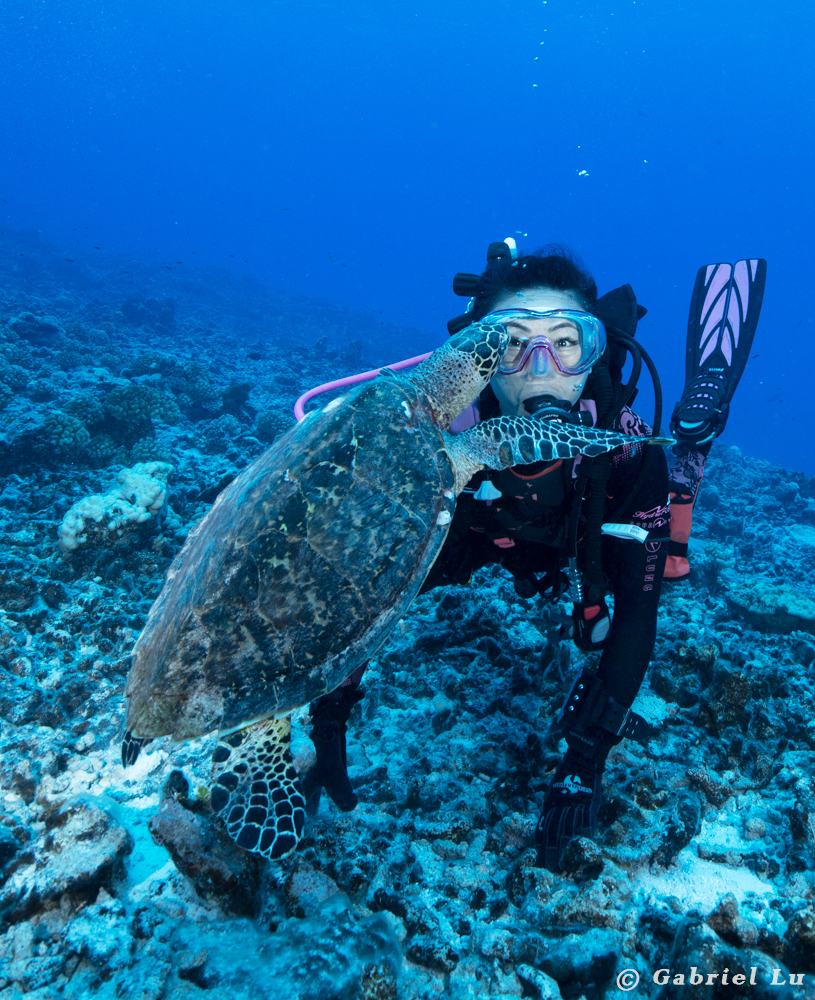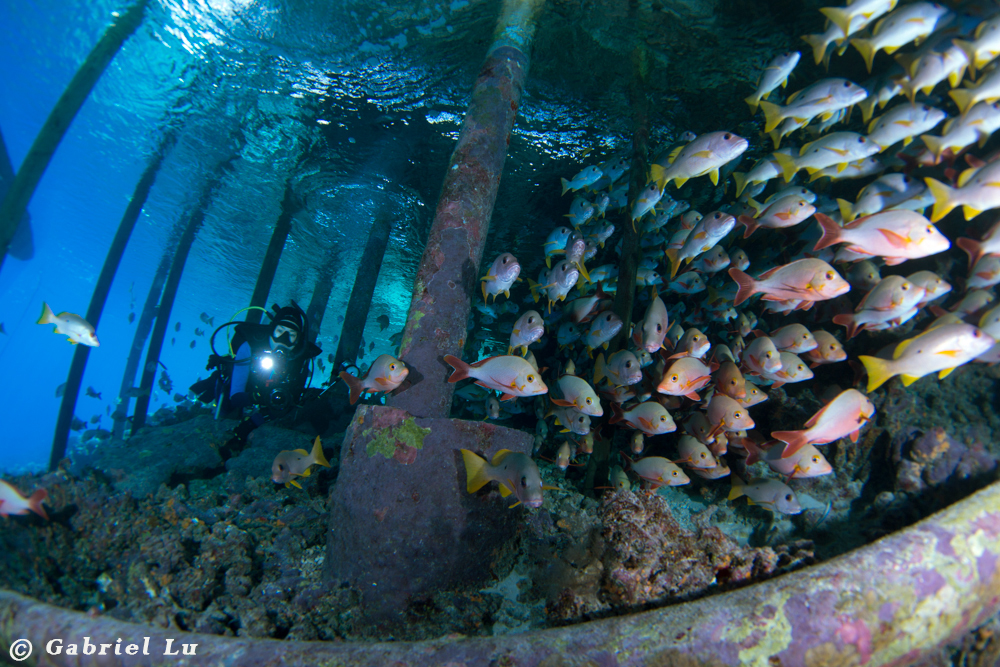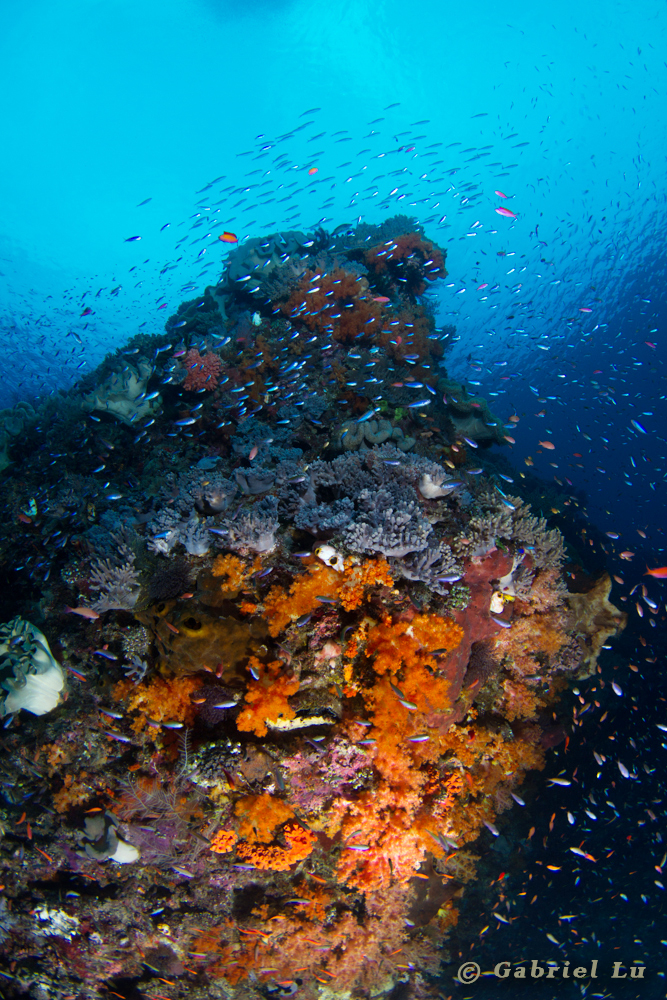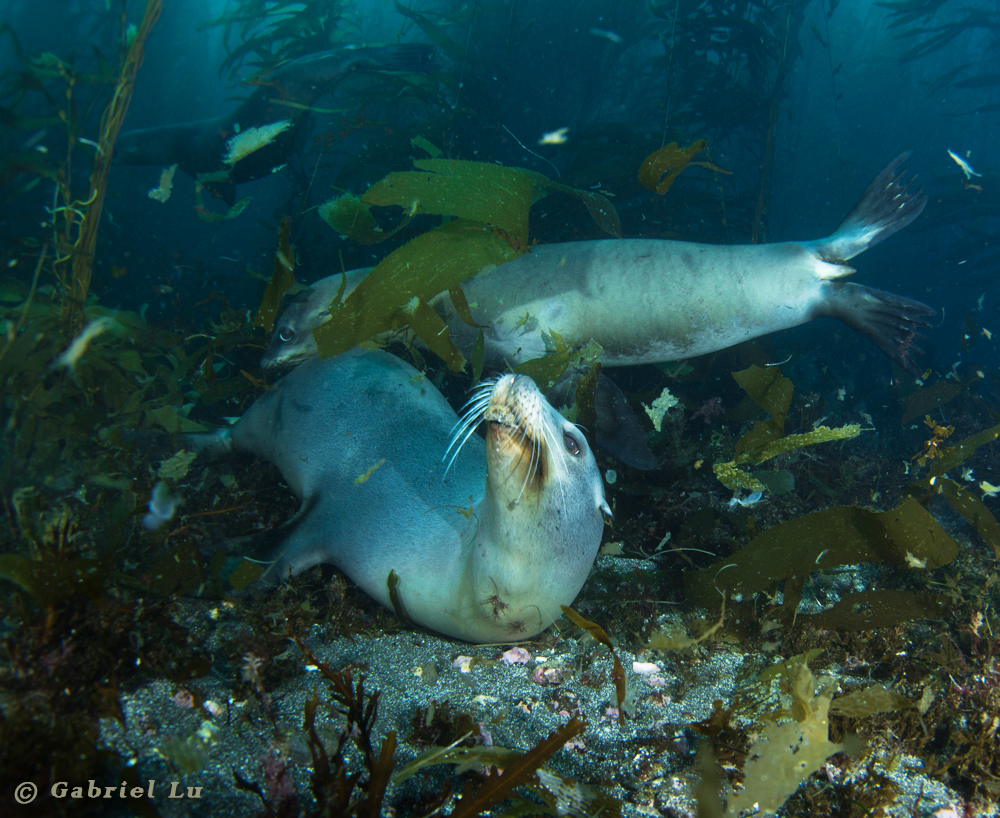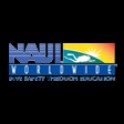Dive Trip Report 12/23/18 – by Megumi Itoh
Location: Old Marineland/Terranea Resort, Rancho Palos Verdes
Charter Master: Andy Rios
Boat: Asante (Capt. Gary and Terri), San Pedro Harbor
This was our last scheduled dive trip of 2018. We did two dives at dive site just off the Old Marineland (currently Terranea Resort). It was overcast, but the sea was calm. There was a slight surface current, but not much. The depth around the boat was 30 to 35 feet. The area was mostly sandy bottom with areas of loose rocks. There were larger boulders when you swim out farther. The visibility was good: about 20 to 25 feet.
There were some giant kelp beds, but large patches of sargassum were more noticeable. We saw small aggregate of opal eyes and blacksmiths. There was also small school of smelt near the surface. Around the reef, we saw some kelp rockfish, kelp bass, and the ever-present garibaldi. The small juvenile kelp bass hiding in kelp bed were very cute. Andy found an octopus and lobsters hiding in the crevice in the first dive, and a school of barracudas and a C-O sole in the second dive (he said there were about 100 of them!). We pointed out scallops, kellet’s whelks, and Norris’s topsnails to the student divers. Some divers saw sea hares and Spanish shawls.
The short boat trip to and from the dive site was short and relatively smooth. Nobody got seasick and the sun came out during the second dive so it was not too cold. Everybody left in good spirits. We wrapped up the 2018 dive season with everyone having enjoyed the dives.
Forgotten Colors
When you are looking through a collection of underwater pictures, you can guess where some picture were taken from the colors and marine life you see around the reef. This one, for example, with predominantly orange soft coral, sea fans, tunicates and sponges with a swarm of brightly colored reef fish is from the Forgotten Islands.
Playing with Sea Lions
Can you see that this cute little sea lion is holding a rock in his mouth? There are also some rocks scattered in front of him. He is showing me the rock he and his friend are playing with! They swam in circles around each other, threw a rock down, and then picked one up. They were swimming around so fast that the torn bits of seaweed swirled around them like leaves in a whirlwind. I played with them with the rocks for about 10m minutes. They can freely swim around and play holding one breath, while I am taking so many breaths from my tank… lol The sea lions at Santa Barbara Island is so cute and playful.


